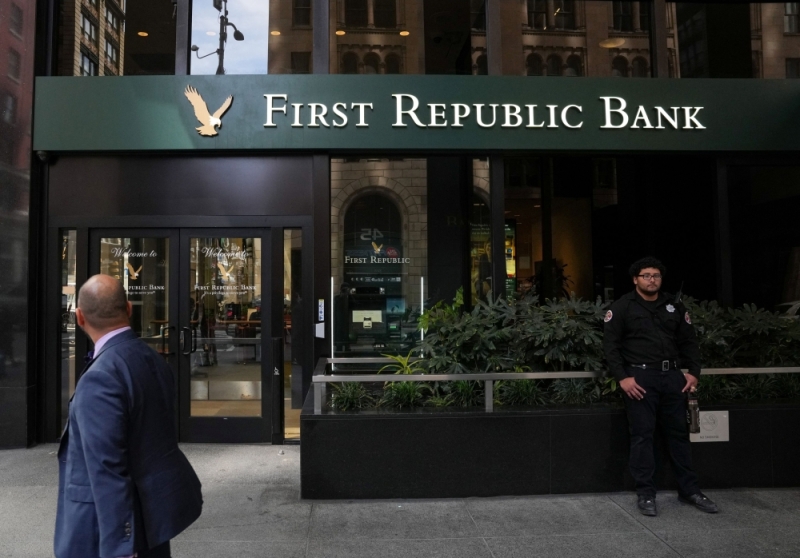Could today’s banking crisis be a repeat of 2008?
It seems as if regional US banks are toppling over like a stack of dominoes. The Federal Reserve has already tried to help banks from becoming the next to fall but with seemingly little success so far. Are policymakers powerless to intervene?

Regulators seized troubled First Republic Bank, making it the second-largest bank failure in U.S. history.
>> How will the US dollar move following the banking crisis?
The downfall of a number of regional US banks so far has probably been seen by most as a consequence of bad management and swift deposit flight. Of course, other theories abound over their difficulties. These include market manipulation by traders and investors and, of course, the fact that the Fed has hiked rates so far and so fast.
Most probably all of these reasons – and possibly more - have had some role to play. But while these factors might have led to the swift fall of particularly vulnerable banks, there are growing signs that much healthier banks are being dragged in and that’s a worrying sign. Could this be like the global financial crisis of 2008?
Mr. Steve Barrow, Head of Standard Bank G10 Strategy, said the situation is quite different. Back then, wholesale funding was the problem for the firms that went under such as Bear Stearns and Lehmans. Today, it is rapid deposit flight that is creating much of the funding strain. In 2008 the solution was to make investment banks ‘real’ banks so that they could get access to the Fed’s lender of last resort facilities. But this does not apply now as regional banks already have access, helped by the Fed’s latest Bank Term Funding Program (BTFP).
“In some senses, it seems that the current problems for the regional banks are closer to the Savings and Loans crisis of the 1980s and 90s, but that saw around a third of S&L’s fail at a cost of over USD150bn to the taxpayer. Few would contemplate the current crisis being ended in such a dramatic way”, said Mr. Steve Barrow.
What are the sorts of solutions that are being talked about now? The hottest one seems to be blanket deposit insurance on either a temporary or permanent basis. Currently deposits are insured up to a limit of USD250k and the first banks to experience problems, such as Silicon Valley Bank were hit hard by the fact that over 90% of the deposits held were not insured. The fact that the Fed did guarantee all deposits in SVB as the crisis hit may suggest that it will do likewise for other banks. But there is clearly a big moral hazard problem in guaranteeing deposits.
Some argue that the banks that have failed so far have already shown signs of recklessness, not borne from the insurance of all deposits of course but, instead, the easier regulatory environment for many in recent years and the fact that banks have been artificially flush with deposits as these have risen sharply during the period of the Fed’s quantitative easing.
>> The banking crisis will drive up gold prices even further
In other words, some banks have already shown signs that moral hazard issues could be problematic under a blanket guarantee of all deposits. Another issue is that deposit insurance saves depositors, it does not necessarily save the banks if stock and bond holders in that bank decide that it is no longer viable. Better supervision and tougher regulation are clearly other solutions on the table but the market may take some convincing that these will stop the dominoes falling straight away.
Could swift and significant policy easing by the Fed be the solution? Mr. Steve Barrow is doubtful, not least because this seems inappropriate on the grounds of what else is happening in the economy, such as above-target inflation and a labour market that’s so tight it is inconsistent with the Fed’s full employment objective. In other words, injudicious easing could make matters worse if it provokes financial market tensions. Regulators could, of course, try to prevent market tensions by restricting or banning short sales of bank stocks, if only temporarily. But this is a road that the authorities will be loath to go down – until it is probably too late!
In short, it seems to us that there is no easy solution to the current problems and that might explain why the likes of the Fed have prevaricated on any ‘solution’ so far, other than giving banks access to Fed liquidity. As such it seems likely that the dominoes will continue to topple.








